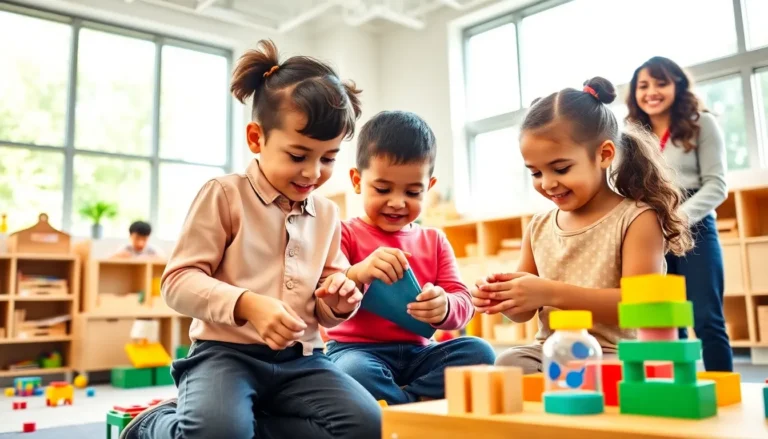Fostering and adoption are topics that can stir a wide range of emotions, from hope and compassion to concern. But why are we still debating over which is better? It’s like arguing whether pizza or tacos are the superior food. Both nourish and bring joy in their own unique ways. In the world of child welfare, fostering and adoption provide essential pathways for children who need a safe haven. Let’s investigate into these journeys to uncover how they work and why they truly matter.
Table of Contents
ToggleWhat Is Fostering?

Fostering is a temporary arrangement in which adults provide a safe and nurturing environment for children who are unable to stay with their birth families. Its primary goal is to support children until they can return home or find a permanent placement. The emotional and psychological needs of children must be met, and foster care serves a vital role in this.
The Purpose And Importance Of Foster Care
Foster care exists to protect children during challenging circumstances. It creates stability and allows children to thrive in a loving environment while their situations are assessed. Without fostering, many children would be left in unsafe conditions, putting their health and well-being at risk.
Types Of Foster Care
There are several types of foster care to consider:
- Emergency Foster Care: This is for short-term placements that occur when a child needs immediate safety.
- Short-Term Foster Care: These arrangements last longer but still aim for quick reunification with family.
- Long-Term Foster Care: When reunification isn’t possible, children can stay in these homes until they age out of the system or find permanent homes.
- Respite Foster Care: This allows primary foster families to take breaks while providing temporary care for their children.
Each type has a distinct role in the child welfare system, showcasing the flexibility and responsiveness of foster care.
The Foster Care Process
The journey to becoming a foster parent isn’t just about completing paperwork. It’s a commitment that involves a series of steps designed to ensure that both children and parents can have a successful and supportive experience.
Steps To Become A Foster Parent
- Research: Jump into the world of fostering. Learn about the requirements and responsibilities involved.
- Attend Information Sessions: Many agencies host these to explain the fostering process and answer questions.
- Complete Training: This is where prospective parents learn skills to handle challenges unique to foster care.
- Home Study: A social worker evaluates the potential foster family’s home and assesses their readiness.
- Get Licensed: If everything checks out, families receive approval to foster, allowing them to welcome children into their homes.
- Match With A Child: When a placement is needed, the agency will match the child with a suitable foster family.
Support Systems For Foster Families
Navigating foster care can feel overwhelming, and that’s where support systems come into play. These networks are crucial for helping foster families manage the emotional and practical aspects of fostering.
Support might include:
- Counseling Services: Professional help can be invaluable for both foster parents and children.
- Support Groups: Connecting with other foster families can help share experiences and advice.
- Training Workshops: Continuous education ensures that foster parents have the skills needed to support children effectively.
- Financial Resources: Many states provide financial assistance to help cover the costs associated with fostering.
These resources are designed to empower foster families and ensure that they do not navigate their journeys alone.
Understanding Adoption
Adoption is the legal process through which a person or couple becomes the permanent parents of a child. This process can be emotional and involve many steps, but it eventually leads to families being created and hearts being united.
Types Of Adoption
- Domestic Adoption: This type occurs within the same country and can include private and public agencies.
- International Adoption: Families can adopt children from other countries, navigating additional legal requirements and cultural insights.
- Open Adoption: This allows for ongoing contact between the adopted child and their birth family, which can be beneficial for all parties involved.
- Closed Adoption: In this scenario, the birth family and adoptive family do not have contact after the adoption is finalized.
The Adoption Process
Adopting a child encompasses multiple phases:
- Application: Interested families apply through an agency or attorney.
- Home Study: Similar to fostering, a home study is conducted to evaluate the home environment and determine suitability.
- Matching: Once approved, families are matched with children based on various factors.
- Placement: The child is placed with the adoptive family, generally under supervision.
- Finalization: Legal approval transforms that relationship into a permanent bond.
Challenges And Rewards Of Fostering And Adoption
Fostering and adoption offer an array of profound rewards but are not without their challenges. Understanding both aspects is essential for those embarking on this journey.
Impact On Foster Children
Foster children often face trauma and instability. Yet, with the right support, they can flourish. It’s crucial to appreciate their unique needs: many arrive carrying emotional baggage that can take time to unpack.
Adoption Success Stories
Countless families experience the joy of adoption. These stories echo hope and endurance, reminding us of the transformative power of love. Take the Smith family, for example. After years of fostering, they welcomed their adopted daughter into their home. Her journey was difficult, but they navigated the highs and lows together, creating a strong, loving bond.
Such stories serve as a testament to the enduring spirit of families formed through fostering and adoption.




